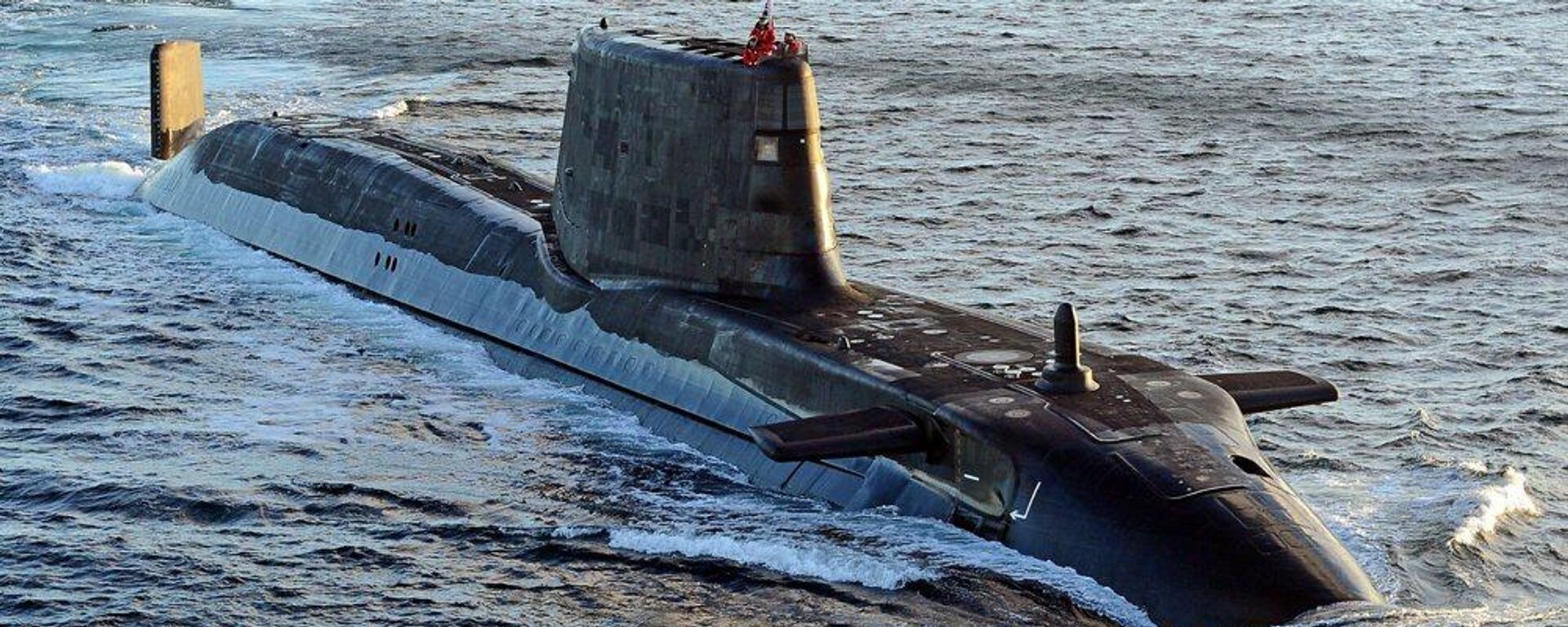AUKUS: Australia's Nuclear Subs May Cost $121 Bn, Carry 'Enormous Challenges', Warns Think Tank
12:45 GMT 14.12.2021 (Updated: 15:24 GMT 28.05.2023)

© AFP 2023 / DREW ANGERER
Subscribe
Australia, the United States and the United Kingdom announced the trilateral AUKUS pact in September this year. Under AUKUS, Australia will take delivery of advanced nuclear-powered submarines from either the US or the UK. China, the perceived threat AUKUS is meant to thwart, has accused Washington of “inciting” nuclear arms race in the region.
A leading Australian think-tank warned on Tuesday that Canberra's plan to develop advanced nuclear submarines under the AUKUS pact could cost the exchequer up to $121 billion (A$171 billion).
The cost of at least eight nuclear-powered attack submarine tech from either the US or the United Kingdom would be nearly $50 billion (A$70 billion) at an “absolute minimum”, the study by Australian Strategic Policy Institute (ASPI) warns.
The new report entitled ‘Strategy: Implementing Australia’s Nuclear Submarine Programme’ has warned that buying the submarine technology and building the subs would be an “enormous undertaking” which would require re-calibration of Australia’s military and industrial capacities as well as ensuring that Canberra adheres to its international non-proliferation commitments.
“The challenges, costs and risks will be enormous. It’s likely to be at least two decades and tens of billions of dollars in sunk costs before Australia has a useful nuclear-powered military capability,” states the study.
The report’s authors, which include former Defence Department officials, have reckoned that it might not be until 2040 that the Royal Australian Navy (RAN) gets its first submarines promised under the AUKUS deal.

10 November 2021, 16:03 GMT
The ASPI study notes that Australia must decide whether it wants to buy either British or American nuclear-powered submarine technology in the months ahead.
The Australian government has already announced the creation of a “Nuclear-Powered Submarine Taskforce” to study questions such as the choice of subs in a bid to assess the "optimal" pathway for Australia to bring the SSNs in service.
“Both the US and the UK face capacity constraints in their nuclear submarine enterprises”, the study points out, noting that it was “producing only one submarine every three years”.
“So, working with us would require it to double the output of its nuclear enterprise,” says the study.
“However, the US appears better placed for this role, given the size, depth and capacity of its nuclear submarine force, naval nuclear enterprise and private-sector nuclear submarine building industry,” it reckons.
The experts behind the study said that the “strategic partnership” agreement between Australia and its partners, once the terms of the project are finalised, would have to include the sharing of technology between the American/British side and their Australian counterparts.
“The success of this programme will rely on the collaboration of the partner governments, directly sharing information as well as empowering their commercial partners to share knowledge and capability”, says the study.
The ASPI noted that the signing of the 'Exchange of Naval Nuclear Propulsion Information Agreement' between the three countries on 22 November will “allow Australian personnel to access training and education from their UK and US counterparts, necessary for learning how to safely and effectively build, operate and support nuclear-powered submarines”.
The study further warns that developing and operating the nuclear subs would also involve adhering to relevant International Atomic Energy Agency (IAEA) safeguards at ports as well as at the time of operation and disposing of the radioactive waste in accordance with international rules.
Australia is a signatory to the Non-Proliferation Treaty (NPT), which advocates non-proliferation of nuclear arms, disarmament and peaceful uses of nuclear energy.
The report says that the submarines being considered for building by Australia employed “weapons-grade enriched uranium (WGEU)”.
“The use of WGEU by the US and the UK in their submarine reactors isn’t a significant proliferation risk, as they’re already nuclear-weapon states. However, the export of WGEU to Australia will create some unique issues for the NPT, given that Australia is a non-nuclear-weapon state,” cautions the report.
“While there’s some debate about whether the use of naval nuclear reactors qualifies as a peaceful or non-peaceful use, the use of nuclear material by a non-nuclear-weapon state for ‘non-peaceful purposes’ is permitted under the NPT, provided it isn’t used for the production of nuclear weapons,” the Australian think tank has said.
The report reckoned that Australia would be able to import the high-grade uranium fuel for its proposed submarines by invoking “paragraph 14” of the NPT, which would entail inspections and developing reporting systems to meet the IAEA safeguards.



